分类号 密级
UDC 注 1
学 位 论 文
各向异性序贯高斯随机模拟研究
(题名和副题名)
毕文一
(作者姓名)
指导教师 姚兴苗 副教授
电子科技大学 成 都
申请学位级别 硕士 学科专业 信息与通信工程
(姓名、职称、单位名称)
提交论文日期 2014.05.13 论文答辩日期 2014.05.29
学位授予单位和日期 电子科技大学 2014 年 06 月 30 日
答辩委员会主席
评阅人
注 1:注明《国际十进分类法 UDC》的类号。
�
RESEARCH ON SEQUENCIAL GAUSSIAN
SIMULATION WITH ANISOTROPY
A Master Thesis Submitted to
University of Electronic Science and Technology of China
Major: Information and Communication Engineering
Author: WenYi Bi
Advisor: XingMiao Yao
School: School of Communication & Information
Engineering
�
独创性声明
本人声明所呈交的学位论文是本人在导师指导下进行的研究工作
及取得的研究成果。据我所知,除了文中特别加以标注和致谢的地方
外,论文中不包含其他人已经发表或撰写过的研究成果,也不包含为
获得电子科技大学或其它教育机构的学位或证书而使用过的材料。与
我一同工作的同志对本研究所做的任何贡献均已在论文中作了明确的
说明并表示谢意。
作者签名: 日期: 年 月 日
论文使用授权
本学位论文作者完全了解电子科技大学有关保留、使用学位论文
的规定,有权保留并向国家有关部门或机构送交论文的复印件和磁盘,
允许论文被查阅和借阅。本人授权电子科技大学可以将学位论文的全
部或部分内容编入有关数据库进行检索,可以采用影印、缩印或扫描
等复制手段保存、汇编学位论文。
(保密的学位论文在解密后应遵守此规定)
作者签名: 导师签名:
日期: 年 月 日
�
�
摘要
摘 要
随机模拟技术是地质统计学的新发展,在储层建模中由于地质环境的复杂性
及观测数据的间接性和微量性,为储层建立的模型存在很高的不确定性。随机模
拟是为储层建立随机模型并产生具有差异的多种结果来表征建模的不确定性。这
些模拟结果称为实现,每一次实现都具有期望的结构及对条件数据的遵从,都是
对已知信息的全面利用,每一次实现都是合理的建模。随机模拟的技术发展出丰
富的算法集,为储层建模提供可靠多样的建模手段。并且,随机模拟已被各种需
要建立空间模型的学科所采纳并发展。
本文先对地质统计分析基本理论作了论述,包括地质变量、随机函数和变差
函数的阐述,尤其是作为空间结构分析与表征的变差函数作了详尽论述,阐明了
实验变差函数分析方法,变差函数模型的构建及已有的具有空间各向异性表征能
力的变差函数构建方法。随后是本文的主要工作,对具有各向异性再现能力的序
贯高斯模拟和具有强数据整合能力的模拟退火的随机模拟方法做了研究和改进。
具体工作如下:
1.针对现有序贯高斯模拟算法只能构建各向同性的变异性和简单的变程各向
异性及基台各向异性的不足,提出了一种新的各向异性构建方法。这种新方法是
在表征结构的变差函数模型构建环节,进行主方向与次方向的区分,并对主方向
构造强连续性变差模型,对次方向构造弱连续性变差模型,并作主次方向间的有
机过渡,得到了各向异性特征更鲜明的序贯高斯模拟。同时,针对观测数据和模
拟过程中产生数据的不同分布特点,提出了采用分区搜索与螺旋搜索有机结合的
搜索策略。将新算法应用到实际工区进行二维模拟分析,与现有的各向同性模拟
和变程各向异性模拟作比较分析,验证了新方法的有效性。
2.针对现有的模拟退火随机模拟方法中存在的温度参数调试复杂及模拟过程
收敛慢的问题,提出在退火机制上采用自适应退火机制,使得温度参数自适应调
节且模拟退火以近似热平稳的状态退火,收敛速度明显提高。并将新算法应用到
二维实际工区作模拟和分析,模拟结果验证了改进算法的有效性。
关键词:储层建模,序贯高斯模拟,各向异性,自适应退火
I
�
ABSTRACT
ABSTRACT
Stochastic simulation is the new development of geostatistics, the reservoir model
is of high uncertainty due to the complex geology environment and the indirectness of
the observations and the small number of direct observations. Stochastic simulation is to
build the reservoir model with various realizations to characterize the uncertainty of the
reservoir. Every realization holds the expected space structure and honors the
conditional data, thus they are all plausible models of the reservoir. As to now, the
technique of stochastic simulation has breed a rich set of simulation algorithms which
offer diverse reliable means to build model for reservoir. And the theory and methods
have been widely adopted and developed by many other disciplines which requiring
building space model for analysis.
This thesis first descripted the basic theory of geostatistics, including the concept
of geology variable and stochastic function and the variogram. Particularly, the
variogram as a critical tool in space structure analysis and characterization was
discussed in detail, including the method of analyzing experimental variogram and
building the variogram model with space anisotropy features. As the traditional
estimation method and the basic parameters estimation method, kriging was discussed
in detail. The key part of this thesis was on the study of two widely used stochastic
simulation methods. One is sequential Gaussian simulation with the ability to reproduce
the anisotropy structure feature in the realizations , the other one is the simulated
annealing simulation capable of integrating various types data. The work of this thesis is
detailed as follows:
1.For the fact that the current sequential Gaussian simulation algorithm can only
construct the isotropic variograms and simple range-based anisotropic variograms and
sill anisotropic vairograms, a new method constructing anisotropy in realizations was
proposed. The new method exploited the variogram’s anisotropy characterizing ability,
distinguished the primary continuous direction and the secondary direction , configured
the primary direction with strong continuous variogram models and the secondary
direction with weak continuous variogram models. The transition means from primary
direction to the secondary direction was also studied. At the same time, based on the
different space distribution characteristics of observations and simulated points during
II
�
ABSTRACT
the simulation, a combination searching method of section-based method and spiral
method was proposed. The proposed algorithm was applied to a 2d work area and
compared the realizations with the results from isotropic algorithm and range-based
algorithm. The new features validated the effectiveness of the new method.
2.For the complexness in temperature parameters adjusting and the slow
convergence in current simulated annealing algorithm in constructing realizations, we
borrowed the advanced adaptive annealing skill and assembled it into the simulation
method to relieve the troublesome manual adjusting job of temperature and the
annealing process is tracked on the D equilibrium to speed up the convergence process.
Through the simulation and analysis of a real reservoir the effectiveness of the
improved simulated annealing simulation was validated.
Keywords: reservoir modeling, sequential Gaussian simulation, anisotropy, adaptive
annealing
III
�
目录
目 录
第一章 绪 论 .................................................................................................................. 1
1.1 研究工作的背景与意义 .................................................................................... 1
1.2 研究现状 ............................................................................................................ 2
1.2.1 空间连续性的各向异性 ........................................................................... 2
1.2.2 克里金技术 ............................................................................................... 3
1.2.3 随机模拟 ................................................................................................... 4
1.3 本文的主要贡献与创新 .................................................................................... 6
第二章 随机模拟的基本理论 ........................................................................................ 7
2.1 地质统计分析的基本概念 ................................................................................ 7
2.1.1 区域化变量、随机函数、变差函数 ....................................................... 7
2.1.2 平稳条件 ................................................................................................... 7
2.1.3 变差函数的理论模型 ............................................................................... 8
2.2 实验变差函数分析 .......................................................................................... 10
2.2.1 实验变差函数计算 ................................................................................. 10
2.2.2 实验变差函数的拟合 ............................................................................. 12
2.3 变差函数各向异性的建模 .............................................................................. 13
2.3.1 各向异性变差函数 ................................................................................. 14
2.3.2 基台值各向异性 ..................................................................................... 18
2.5 克里金技术 ...................................................................................................... 20
2.5.1 简单克里金 ............................................................................................. 20
2.5.2 普通克里金 ............................................................................................. 21
2.6 高斯随机数的产生 .......................................................................................... 22
2.6.1 累积密度函数求逆法 ............................................................................. 23
2.6.2 变换方法 ................................................................................................. 23
2.6.3 拒绝法 ..................................................................................................... 25
2.6.4 递归方法 ................................................................................................. 26
2.7 本章小结 .......................................................................................................... 27
第三章 各向异性序贯高斯模拟 .................................................................................. 29
3.1 各向异性序贯高斯模拟方法 ........................................................................... 29
3.1.1 数据的正态变换与反变换 ..................................................................... 29
IV
�

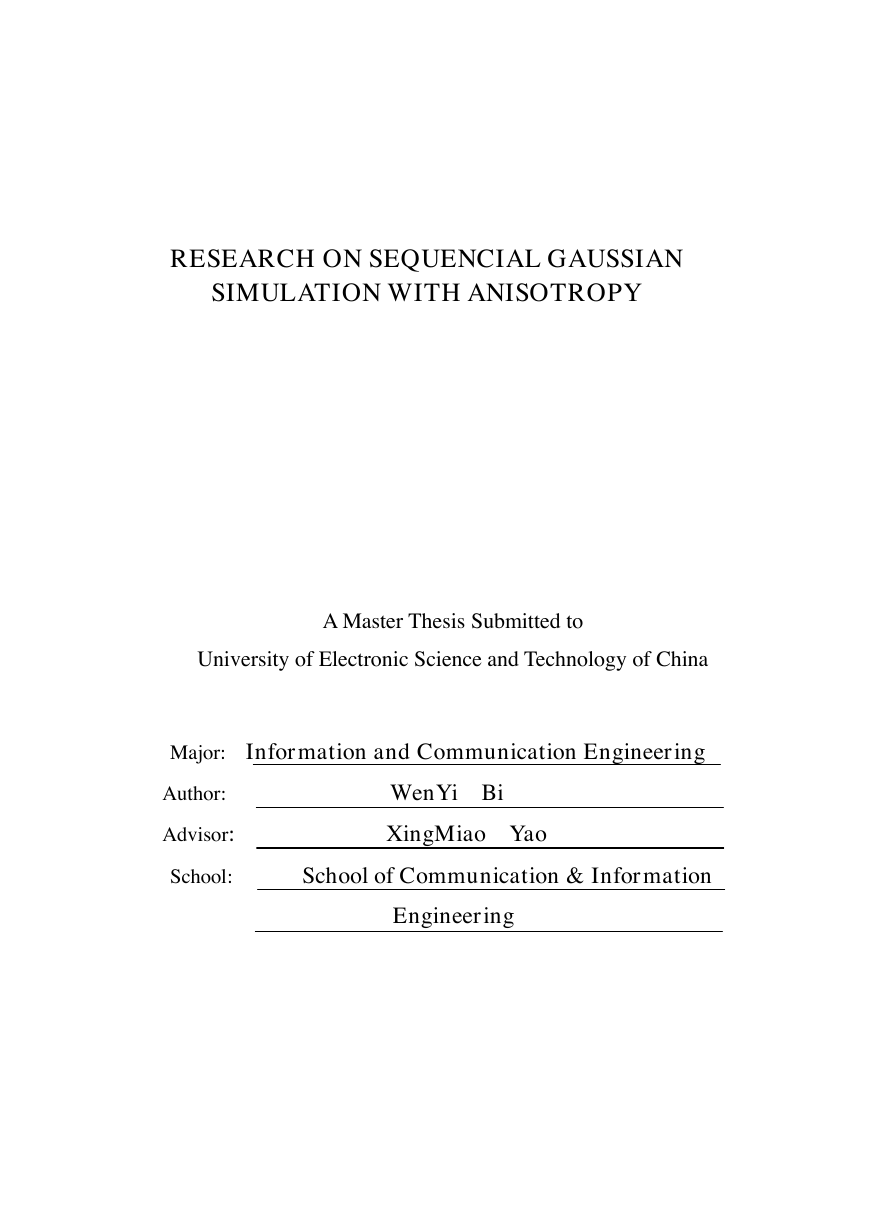
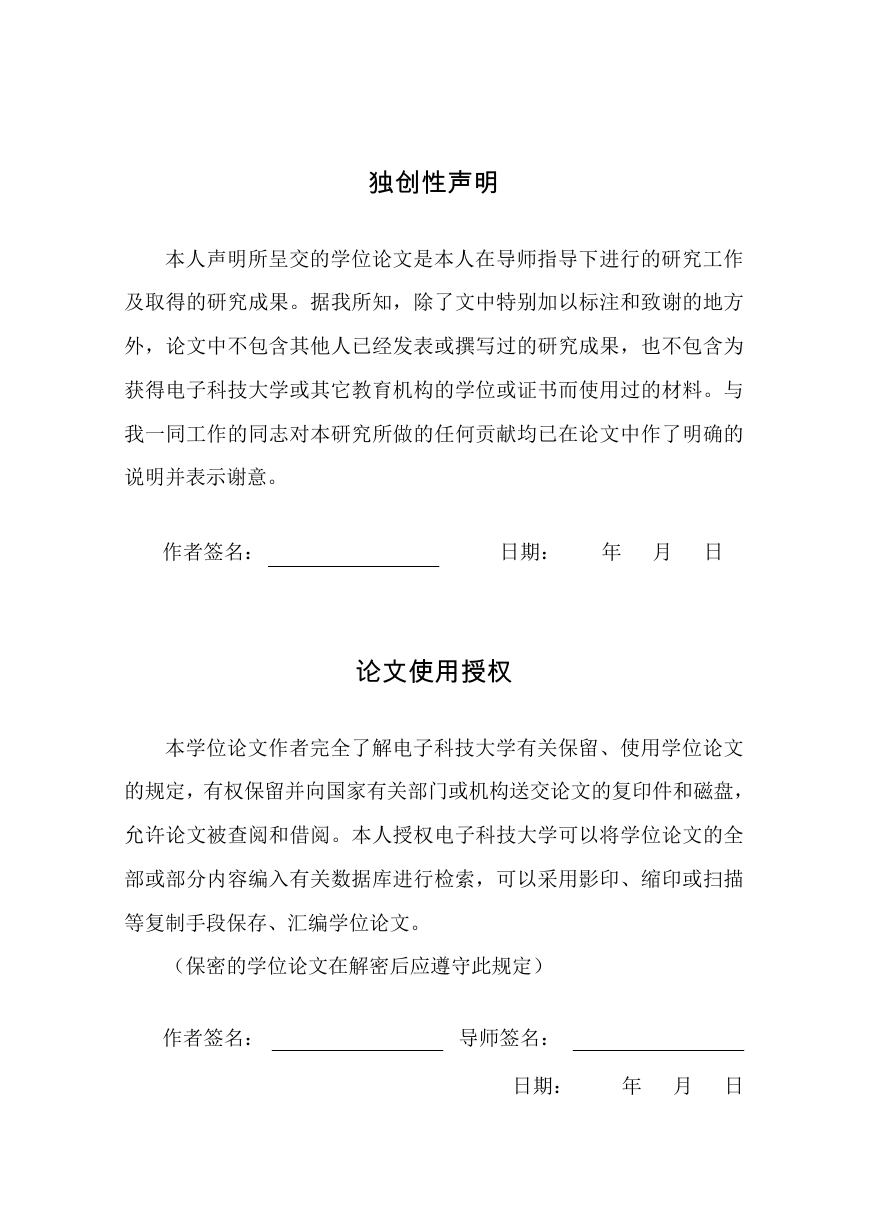

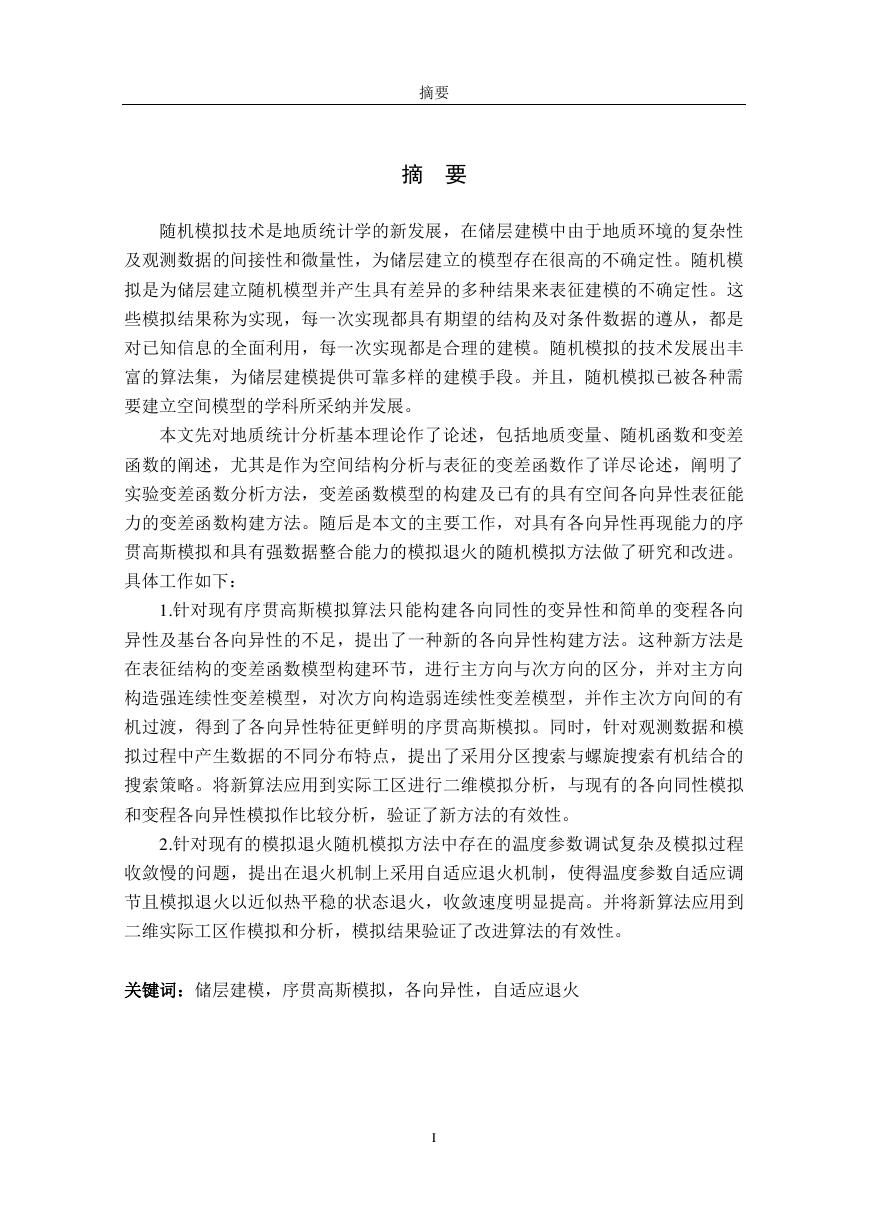
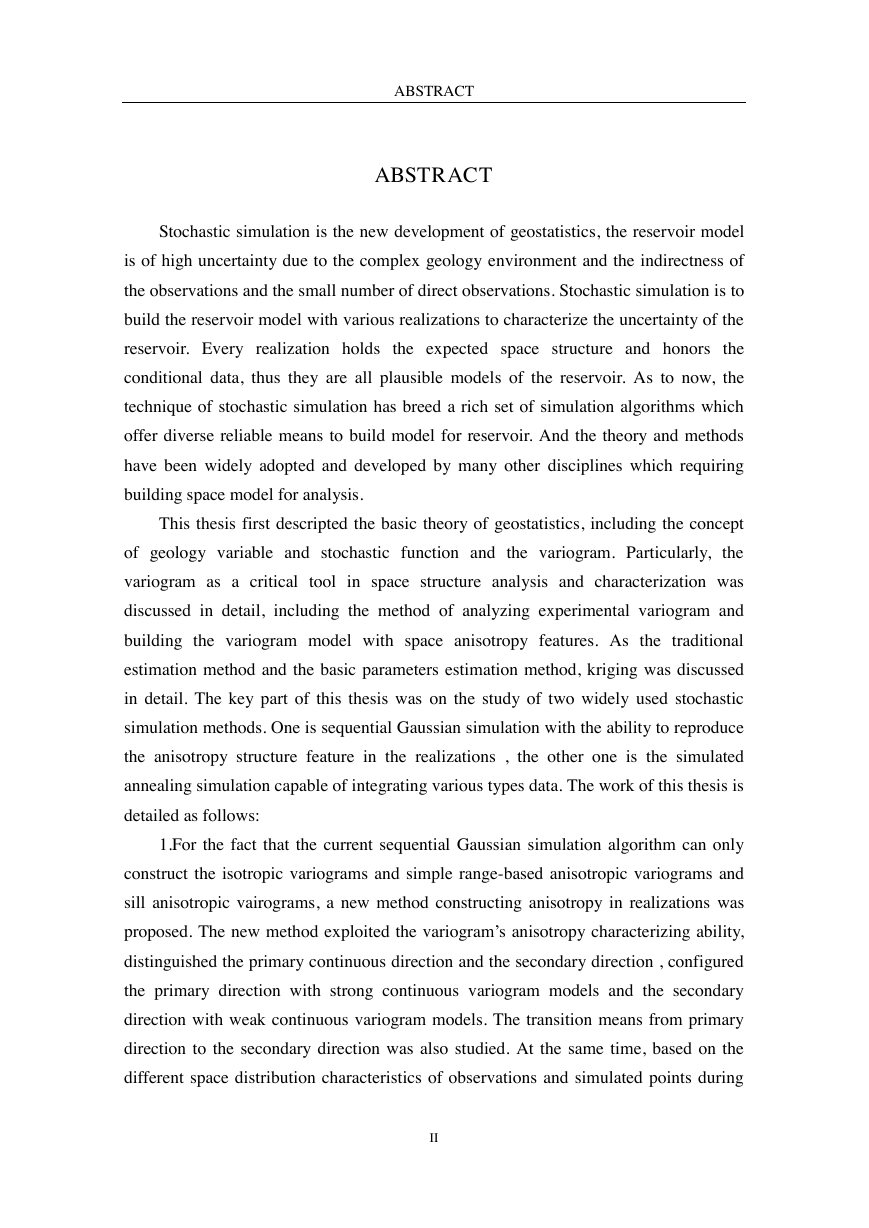
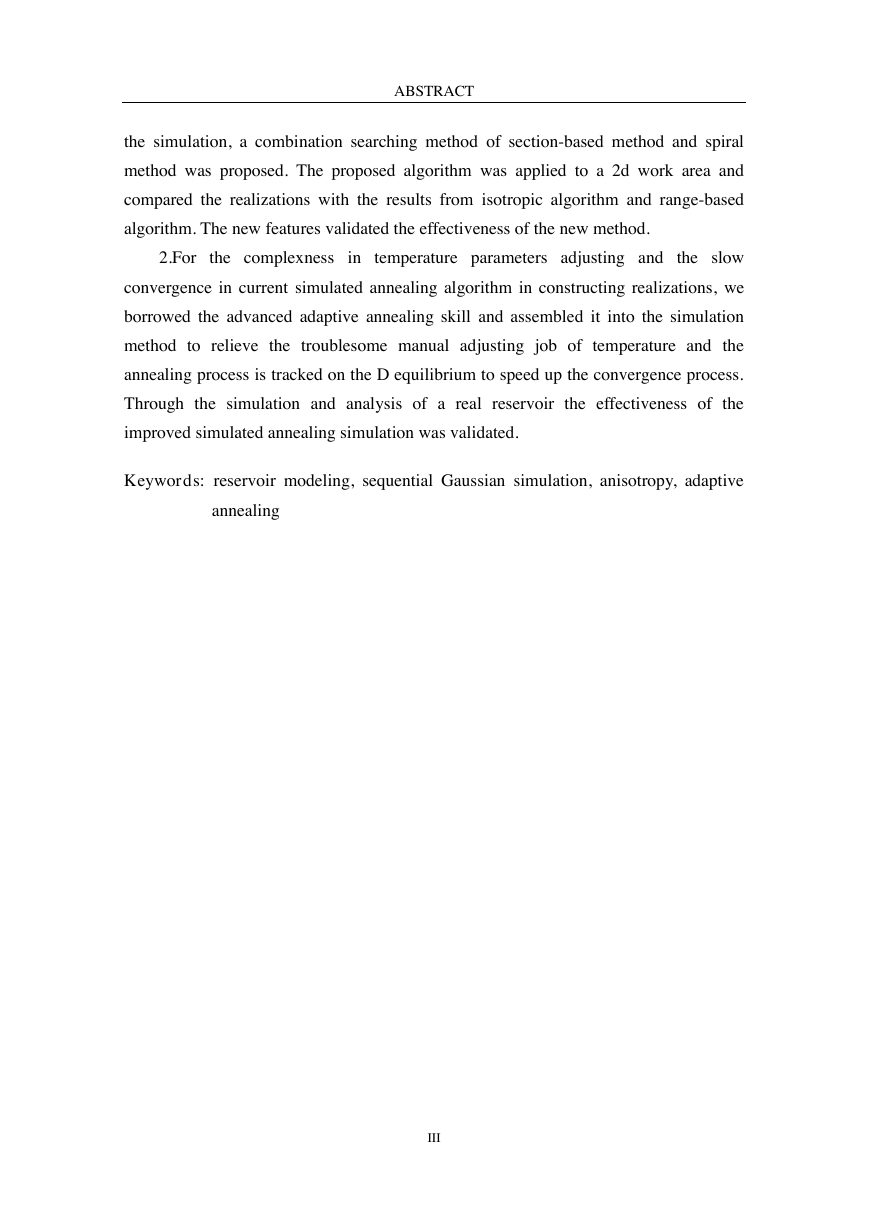
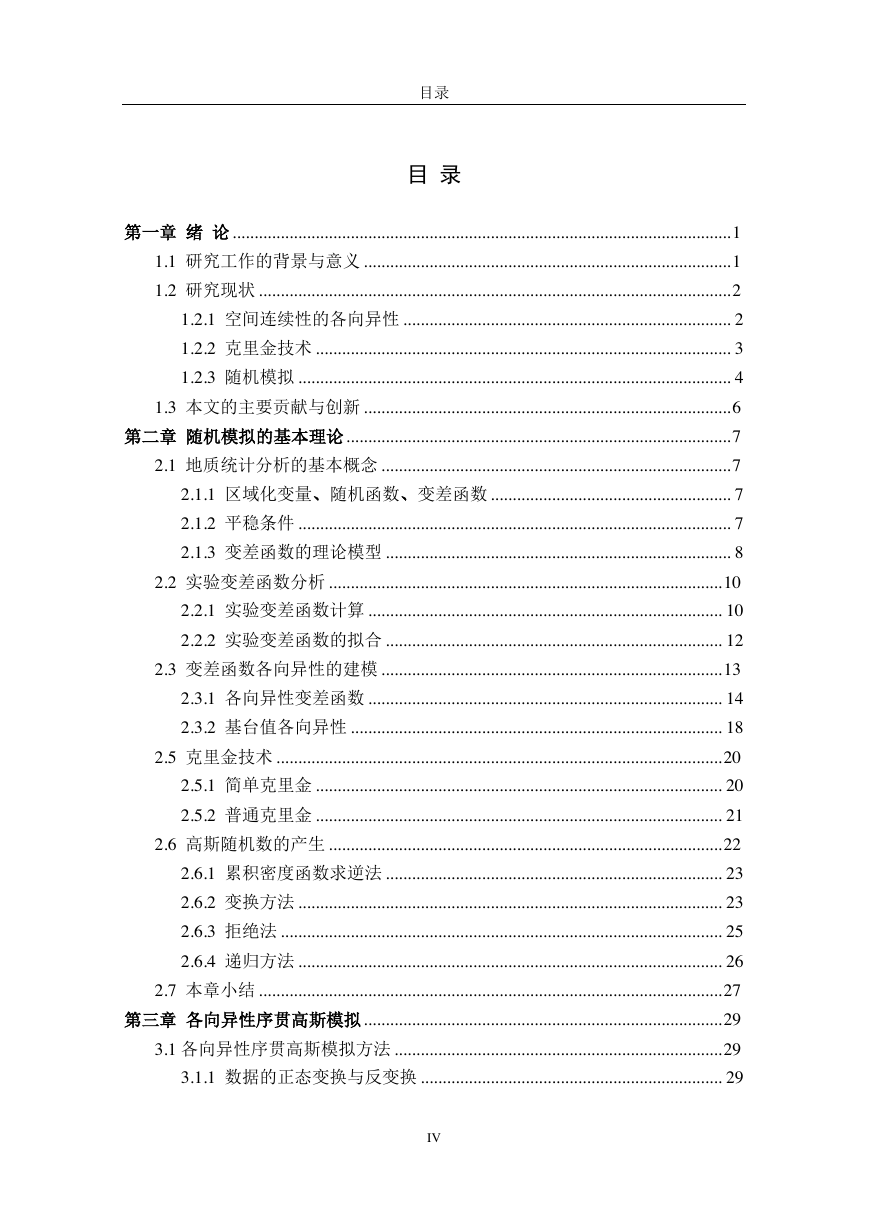








 2023年江西萍乡中考道德与法治真题及答案.doc
2023年江西萍乡中考道德与法治真题及答案.doc 2012年重庆南川中考生物真题及答案.doc
2012年重庆南川中考生物真题及答案.doc 2013年江西师范大学地理学综合及文艺理论基础考研真题.doc
2013年江西师范大学地理学综合及文艺理论基础考研真题.doc 2020年四川甘孜小升初语文真题及答案I卷.doc
2020年四川甘孜小升初语文真题及答案I卷.doc 2020年注册岩土工程师专业基础考试真题及答案.doc
2020年注册岩土工程师专业基础考试真题及答案.doc 2023-2024学年福建省厦门市九年级上学期数学月考试题及答案.doc
2023-2024学年福建省厦门市九年级上学期数学月考试题及答案.doc 2021-2022学年辽宁省沈阳市大东区九年级上学期语文期末试题及答案.doc
2021-2022学年辽宁省沈阳市大东区九年级上学期语文期末试题及答案.doc 2022-2023学年北京东城区初三第一学期物理期末试卷及答案.doc
2022-2023学年北京东城区初三第一学期物理期末试卷及答案.doc 2018上半年江西教师资格初中地理学科知识与教学能力真题及答案.doc
2018上半年江西教师资格初中地理学科知识与教学能力真题及答案.doc 2012年河北国家公务员申论考试真题及答案-省级.doc
2012年河北国家公务员申论考试真题及答案-省级.doc 2020-2021学年江苏省扬州市江都区邵樊片九年级上学期数学第一次质量检测试题及答案.doc
2020-2021学年江苏省扬州市江都区邵樊片九年级上学期数学第一次质量检测试题及答案.doc 2022下半年黑龙江教师资格证中学综合素质真题及答案.doc
2022下半年黑龙江教师资格证中学综合素质真题及答案.doc